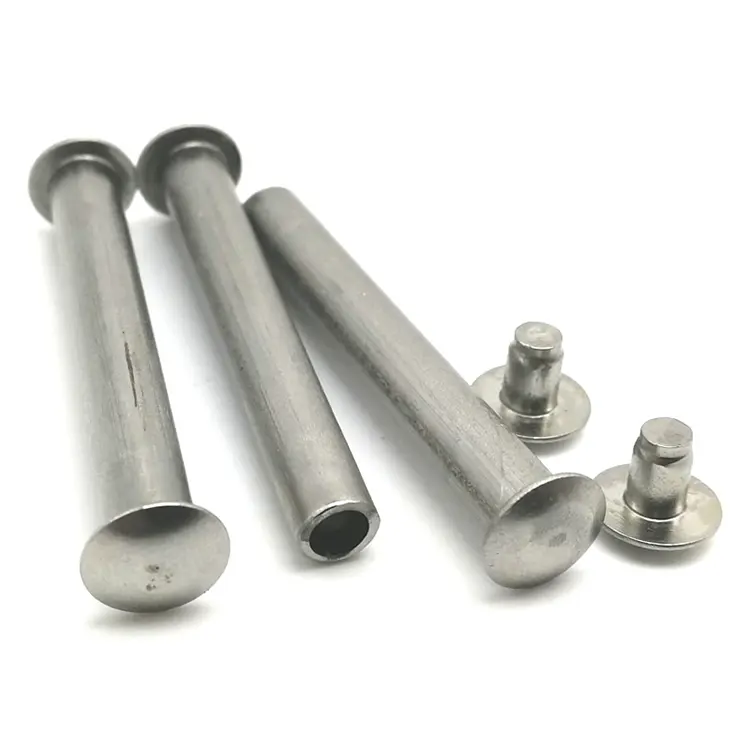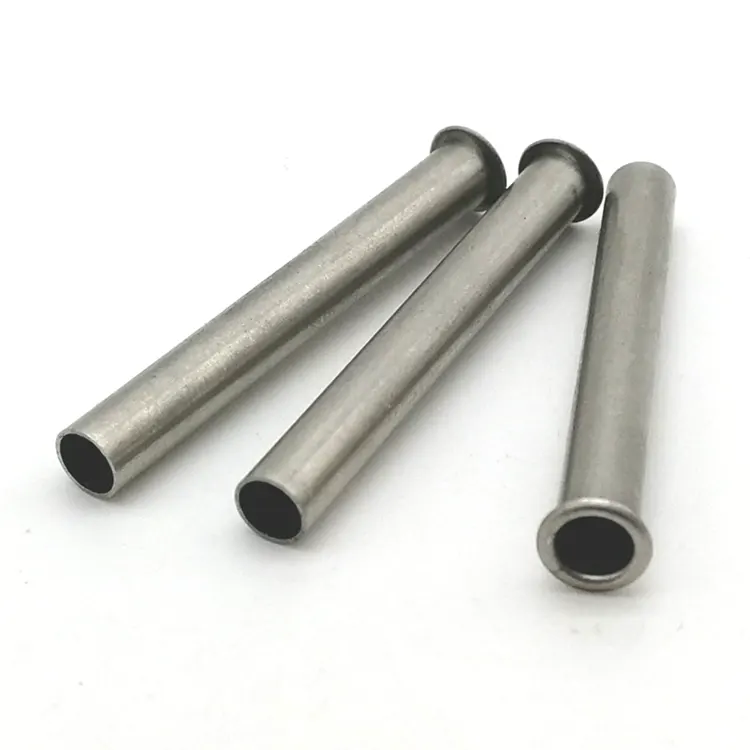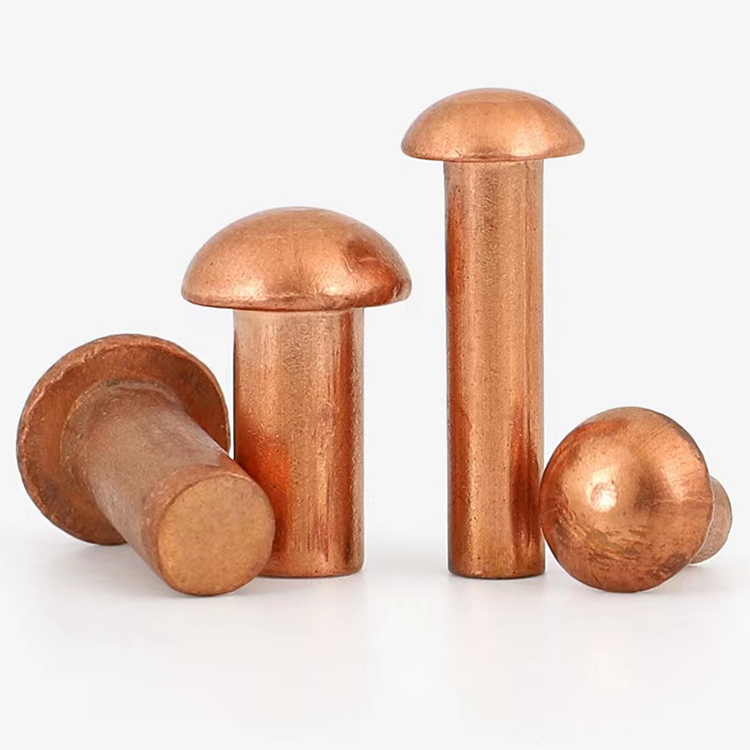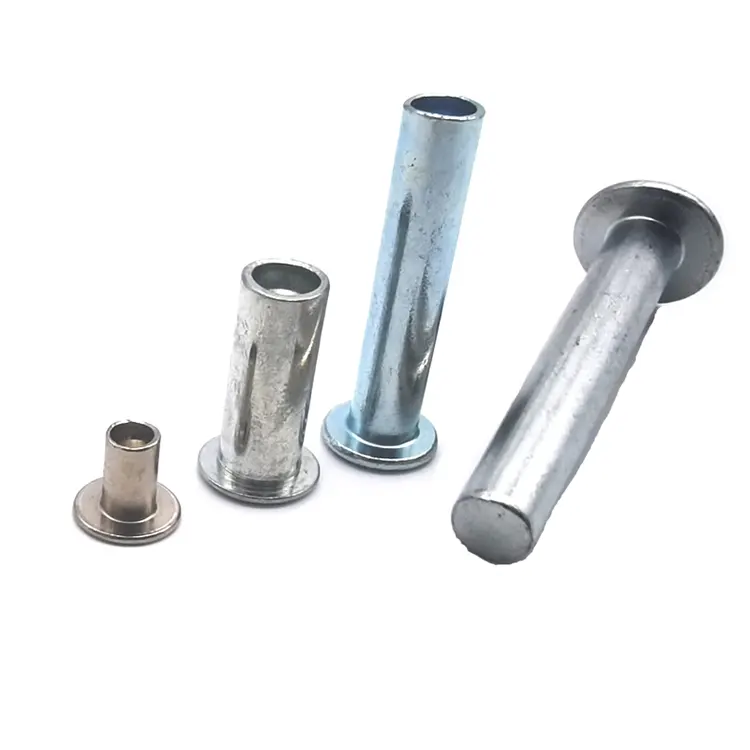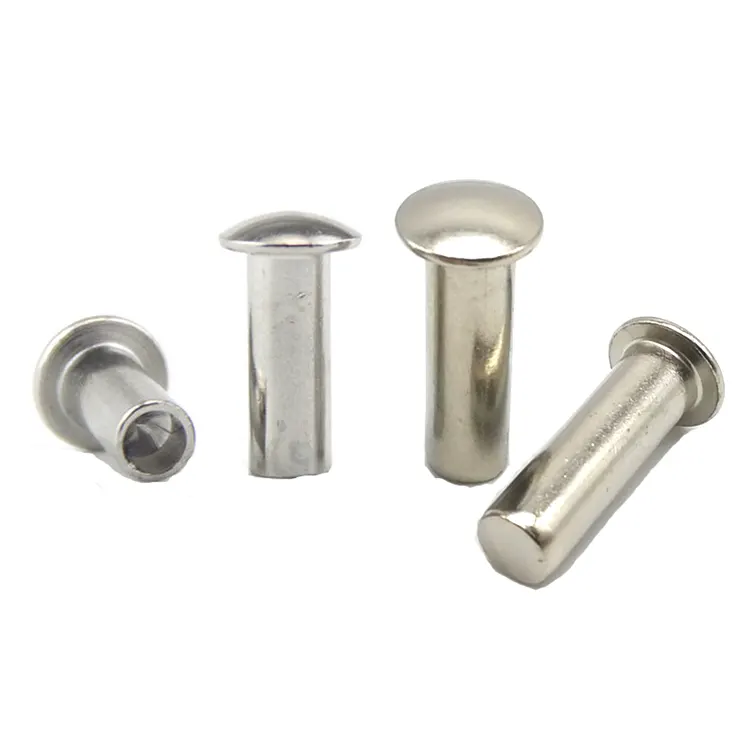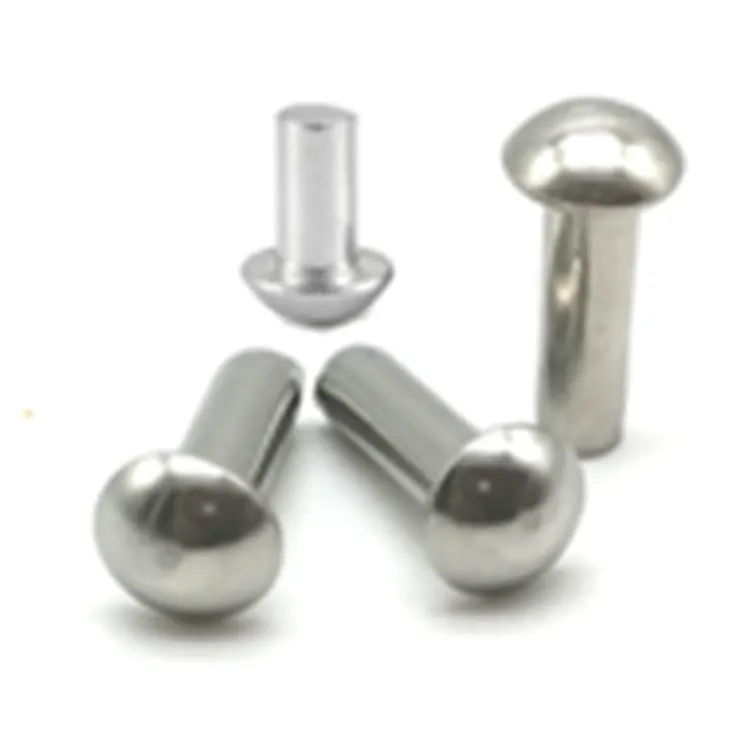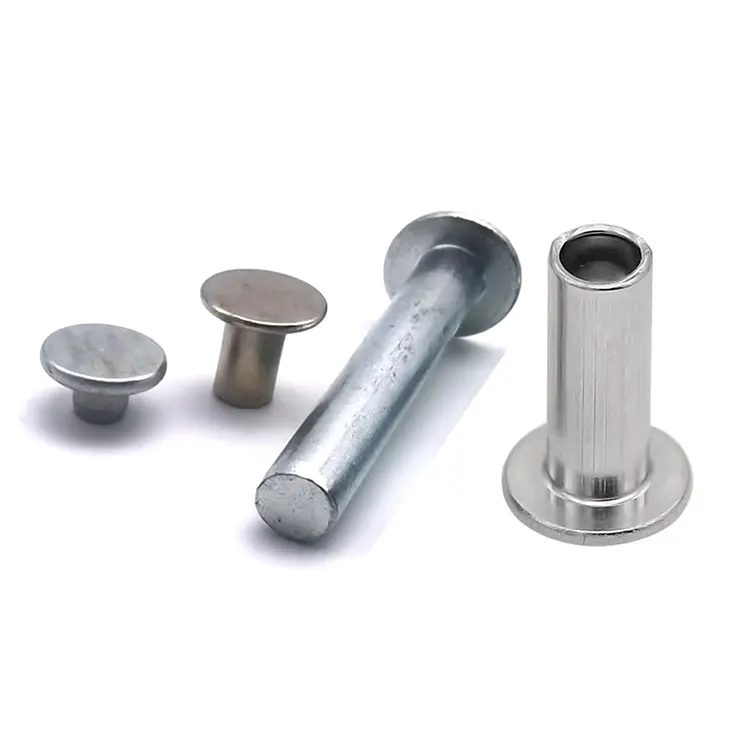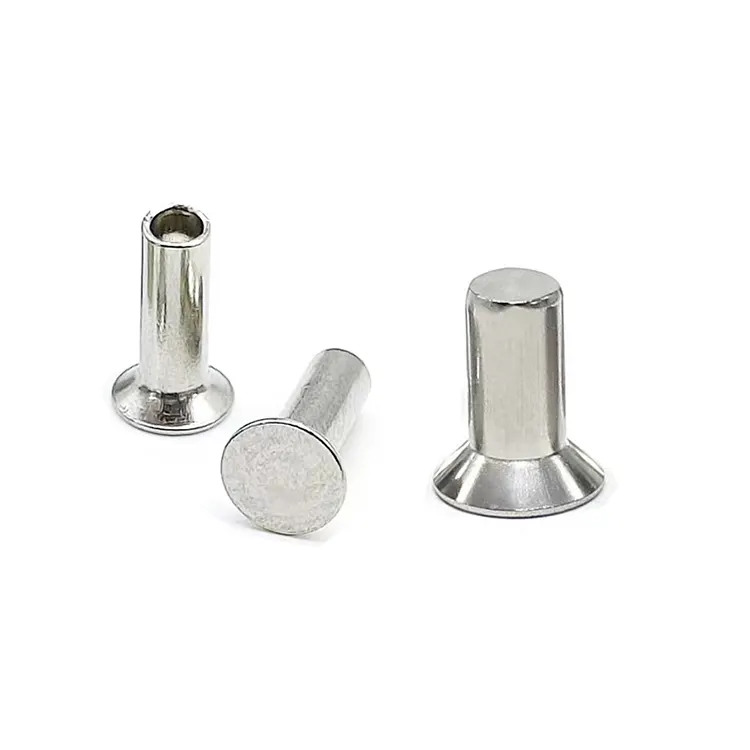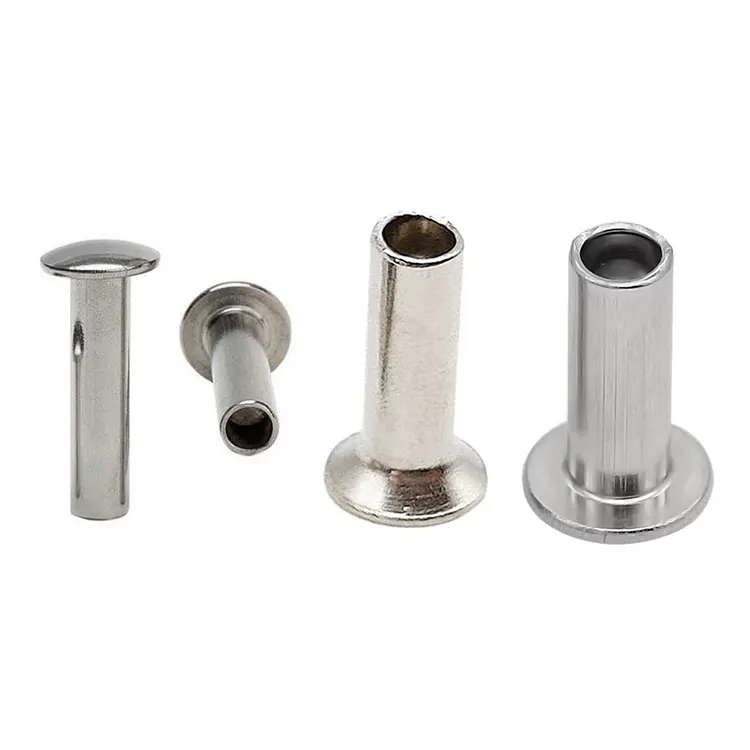Rivets speciali
One of Chinese manufacturer of Special Rivets, offering excellent quality at a competitive price, is Notin. Feel free to get in touch.
In the field of mechanical manufacturing and assembly, rivets are a common fastener used to professionally connect two or more parts. According to the degree of standardization, rivets can be divided into two categories: standard rivets and non-standard rivets. The size, shape and material of standard rivets are uniformly specified, while non-standard rivets are customized according to specific needs. The following will introduce the characteristics and applications of non-standard rivets from multiple aspects.
What are non-standard rivets?
Non-standard rivets are also called special rivets. They refer to rivets that do not meet national standards or industry general standards. Their size, material, structure and other parameters are designed and manufactured according to the specific needs of customers. Due to the different connection requirements of different industries and equipment, standard rivets may not meet the requirements of certain special scenarios, so non-standard rivets came into being.
What are the characteristics of special rivets?
(1) Strong customization: Non-standard rivets can be personalized according to factors such as the use environment, stress conditions, and assembly methods to ensure that they perform well in actual applications.
(2) Diverse materials: In addition to common carbon steel and stainless steel, non-standard rivets can also be made of special materials such as aluminum alloy, copper alloy, titanium alloy, etc. to meet different corrosion resistance, strength and weight requirements.
(3) Flexible structure: The structure of non-standard rivets can be adjusted according to needs, such as head shape, stem diameter, length, etc., and can even be designed to be hollow, semi-hollow or other special shapes.
- View as
Rivetti in ferro
Rivetti in ferro, detti ancherivetti in acciaio al carbonio, sono un tipo di elemento di fissaggio tipicamente realizzato in acciaio al carbonio con trattamenti superficiali come la zincatura. Offrono una resistenza alla trazione di 400-500 MPa e sono adatti per applicazioni come apparecchiature elettriche. Per adattarsi a varie applicazioni di rivettatura, i rivetti in ferro sono generalmente prodotti come rivetti semicavi o pieni. I rivetti in ferro sono un componente meccanico fondamentale ma cruciale, ampiamente utilizzato per la loro resistenza, convenienza e facilità d'uso.
Per saperne di piùInvia richiestaRivetti a testa cilindrica in ferro
I rivetti a testa cilindrica in ferro, con le loro caratteristiche leggere, resistenti alla corrosione ed esteticamente gradevoli, sono diventati versatili tuttofare nella produzione industriale. Sia nelle applicazioni critiche in termini di peso che nella vita di tutti i giorni, i rivetti a testa cilindrica in ferro offrono prestazioni e affidabilità eccezionali. Benvenuti a Nuote Metals a Dongguan, Cina, specialista in questi rivetti. Offriamo prodotti di alta qualità con consegna garantita. Produciamo anche altri accessori hardware, come occhielli, parti lavorate e parti stampate.
Per saperne di piùInvia richiestaRivetti a testa di fungo in ferro
Nuote Metals è un produttore di rivetti professionale con sede a Dongguan, in Cina. I nostri rivetti con testa a fungo in ferro, come suggerisce il nome, presentano una testa a forma di fungo con un nucleo semicavo o pieno. La testa è generalmente più grande e fornisce una buona superficie di appoggio. Questa struttura consente la deformazione durante l'installazione, tramite estrusione o attrezzature specializzate, per collegare in modo sicuro due o più materiali. Realizzati in ferro, sono generalmente zincati o trattati con altre finiture per resistere alla corrosione.
Per saperne di piùInvia richiestaRivetti a testa piatta in ferro
Essendo un comune connettore meccanico, i rivetti a testa piatta in ferro occupano una posizione importante in molteplici campi industriali grazie alle loro caratteristiche di progettazione e all'ampia gamma di applicazioni. Strutturalmente, la testa del rivetto è piatta, a forma di disco e il corpo è cilindrico. L'estremità viene appositamente lavorata per formare una struttura sconvolta. Dopo l'installazione, la pressione o l'impatto provocano l'espansione del corpo, formando un impegno meccanico con la parete del foro per ottenere un effetto di serraggio. Rispetto ai rivetti a testa tonda o ai rivetti a testa svasata, il design a testa piatta presenta vantaggi significativi nella distribuzione della forza e nell'area di contatto. Ad esempio, quando sottoposta a forza di taglio, la sua testa a forma di disco può disperdere il carico su un'area più ampia, riducendo efficacemente la pressione per unità di area.
Per saperne di piùInvia richiestaRivetti a testa svasata in ferro
La testa di un rivetto a testa svasata in ferro ha la forma di un tronco di cono, con il cono tipicamente inclinato di 90° o 120° rispetto all'asse del rivetto. Questa forma consente alla testa del rivetto di rimanere a filo con la superficie del componente collegato dopo l'installazione, ottenendo un aspetto liscio. Ciò è particolarmente adatto per applicazioni in cui la planarità della superficie è fondamentale. Vieni da Nuote Metals per personalizzare il tuo rivetto a testa svasata in ferro desiderato. I nostri ingegneri, con oltre 10 anni di esperienza, hanno una profonda familiarità con la produzione di vari tipi di rivetti.
Per saperne di piùInvia richiestaRivetti semitubolari
Un rivetto semitubolare è un elemento di fissaggio metallico solido a un'estremità e parzialmente cavo all'altra, solitamente realizzato con materiali come lega di alluminio, rame o acciaio. La porzione cava occupa circa da un terzo a metà della lunghezza del corpo del rivetto. Questo design consente al rivetto di ottenere un effetto di fissaggio attraverso la deformazione dell'estrusione durante l'installazione. Rispetto arivetti solidi, i rivetti semitubolari sono caratterizzati da leggerezza, facilità di installazione e ampia applicabilità; rispetto ai rivetti completamente cavi, forniscono maggiore resistenza e stabilità. I rivetti semitubolari non richiedono attrezzature complesse durante l'installazione e solitamente possono essere completati con utensili manuali o pneumatici. Pertanto, sono favoriti in molti campi. Nuote Metals è specializzata nella produzione di rivetti semitubolari, con una gamma completa di stampi e accoglie volentieri la personalizzazione.
Per saperne di piùInvia richiestaWhat are the characteristics of special rivets?
(1) Strong customization: Non-standard rivets can be personalized according to factors such as the use environment, stress conditions, and assembly methods to ensure that they perform well in actual applications.
(2) Diverse materials: In addition to common carbon steel and stainless steel, non-standard rivets can also be made of special materials such as aluminum alloy, copper alloy, titanium alloy, etc. to meet different corrosion resistance, strength and weight requirements.
(3) Flexible structure: The structure of non-standard rivets can be adjusted according to needs, such as head shape, stem diameter, length, etc., and can even be designed to be hollow, semi-hollow or other special shapes.
Manufacturing process of special rivets
The manufacturing of non-standard rivets involves multiple links, mainly including:
1.Material selection: Select suitable metal or alloy materials according to the use environment. 2. 2.Cold heading or hot heading: Use pressure processing to form the basic shape of the rivet into the metal blank.
3.Turning or milling: Fine-process the details such as the head and stem of the rivet to ensure dimensional accuracy.
4.Surface treatment: Such as galvanizing, nickel plating, anodizing, etc. to improve corrosion resistance or aesthetics.
Advantages and limitations of special rivets
(1) Advantages: They can meet special needs, improve assembly efficiency and connection reliability, and are suitable for complex or high-demand application scenarios.
(2) Limitations: Since they are customized products, the production cost is high, the delivery cycle is relatively long, and customers are required to provide detailed technical parameters.
How to choose suitable special rivets?
(1) Clarify the needs: Determine the key parameters such as the rivet's operating environment, stress conditions, and corrosion resistance requirements.
(2) Material matching: Select the appropriate material based on actual needs to avoid over-design that leads to increased costs.
(3) Communicate with suppliers: Provide detailed technical drawings or samples to ensure that the non-standard rivets produced meet expectations.
What are the main applications of special rivets?
(1) Aerospace: Aircraft, rockets and other equipment have extremely high requirements for the weight, strength and high-temperature resistance of fasteners. Non-standard rivets can be optimized according to specific needs.
(2) Automobile manufacturing: Certain special models or high-performance vehicles may require non-standard rivets to meet the needs of lightweight or high-strength connections.
(3) Electronic equipment: Precision instruments or small electronic equipment may require micro non-standard rivets to ensure the stability and compactness of the connection.
(4) Construction industry: Some special-structured buildings or decoration projects may use non-standard rivets to meet specific installation requirements.
Market status of special rivets
With the advancement of industrial technology, more and more industries have begun to use non-standard rivets to optimize product design. At present, non-standard rivet manufacturers are mainly concentrated in the Yangtze River Delta and Pearl River Delta regions in China, and can provide a variety of customized services. Due to the high unit price of non-standard rivets, its market size is relatively small, but the demand in the high-end manufacturing field continues to grow.
Future development trends
(1) Lightweight design: With the improvement of energy-saving and environmental protection requirements, non-standard rivets made of lightweight materials will be more popular.
(2) Intelligent production: Automated equipment and digital management will further improve the production efficiency and quality stability of non-standard rivets.
(3) Wider application: Emerging industries such as new energy and robotics may drive the growth of demand for non-standard rivets.
In summary, special rivets are highly customized fasteners that can meet special needs that standard rivets cannot meet. Although its production cost is relatively high, it plays an irreplaceable role in industries such as aerospace, automobiles, and electronics. In the future, with the advancement of manufacturing technology, the application scope of non-standard rivets is expected to further expand.

